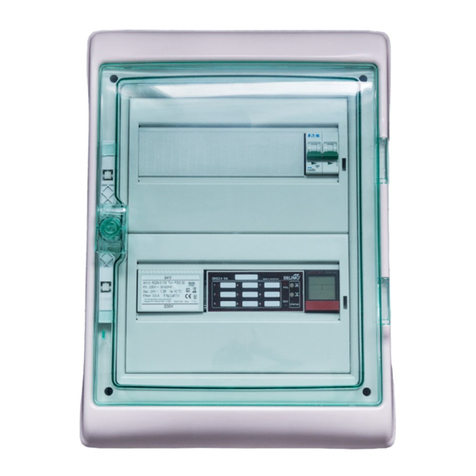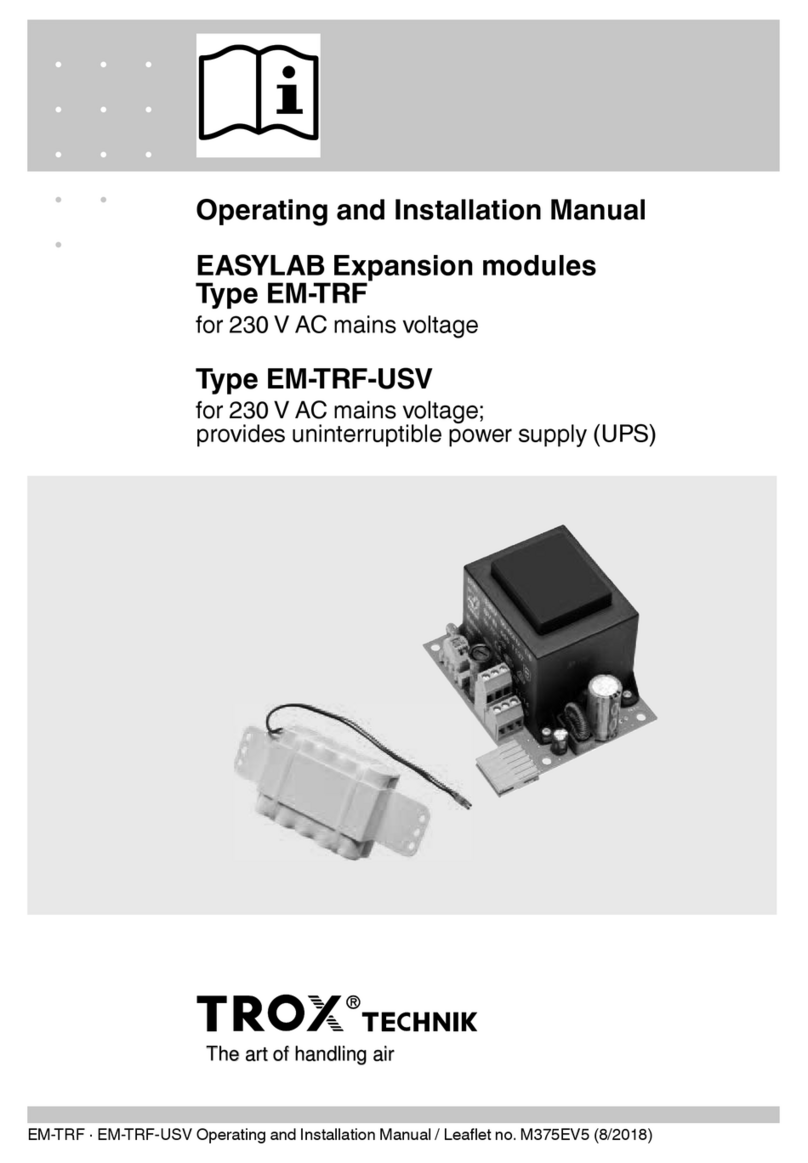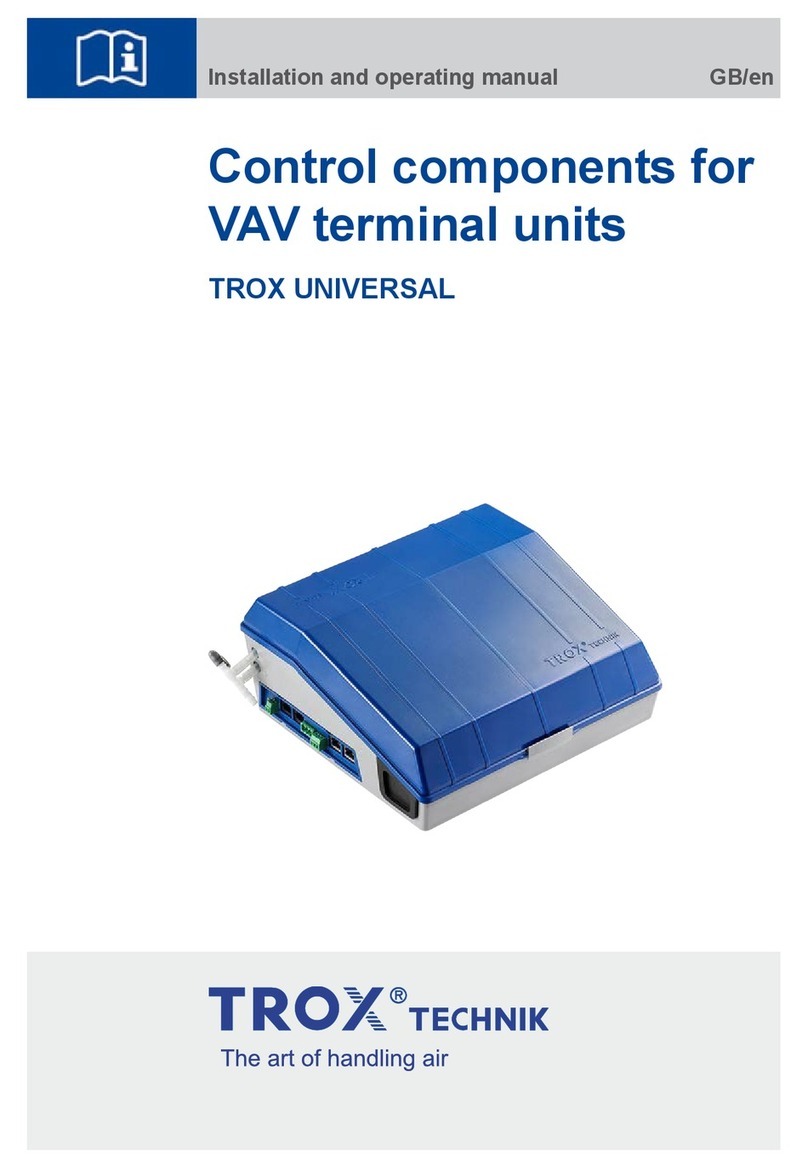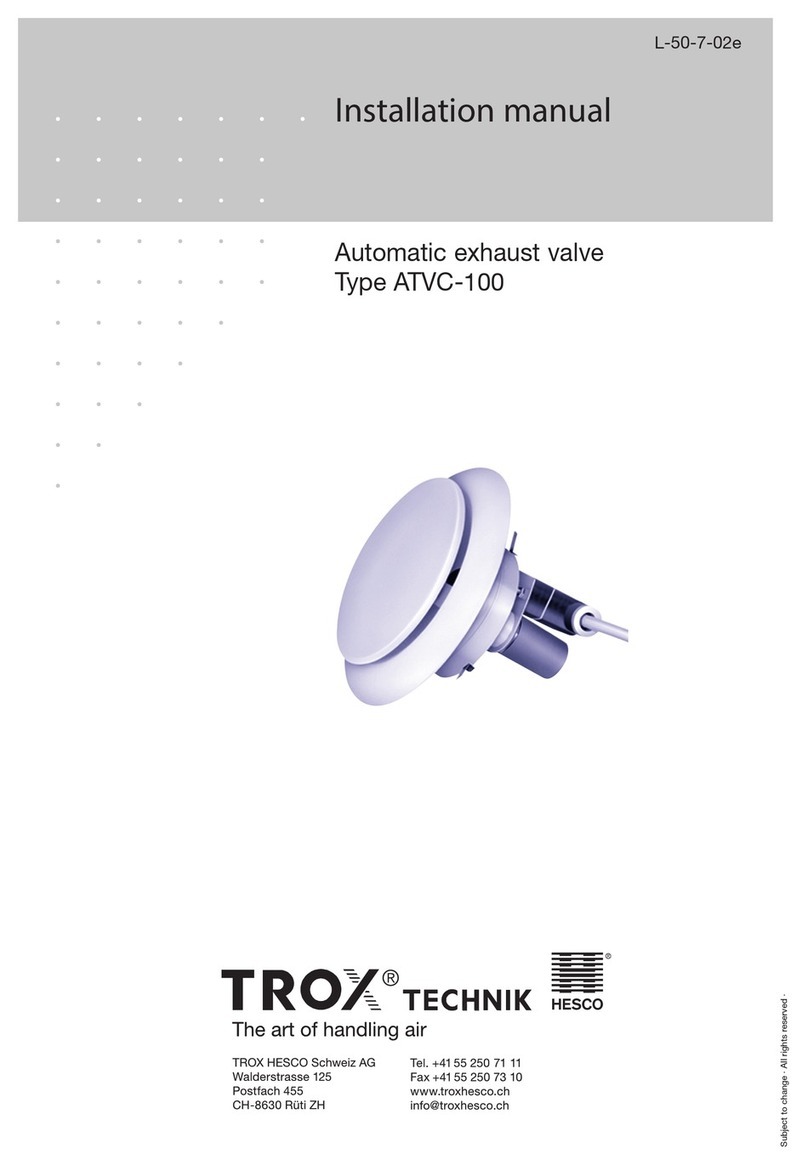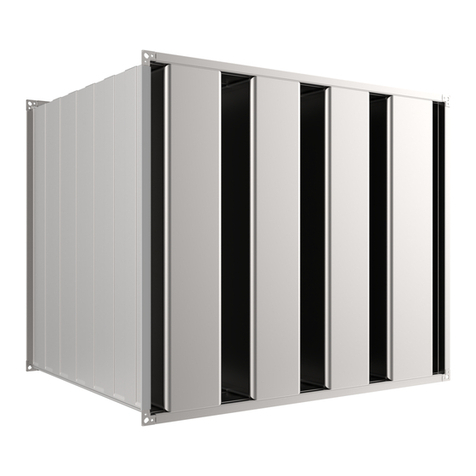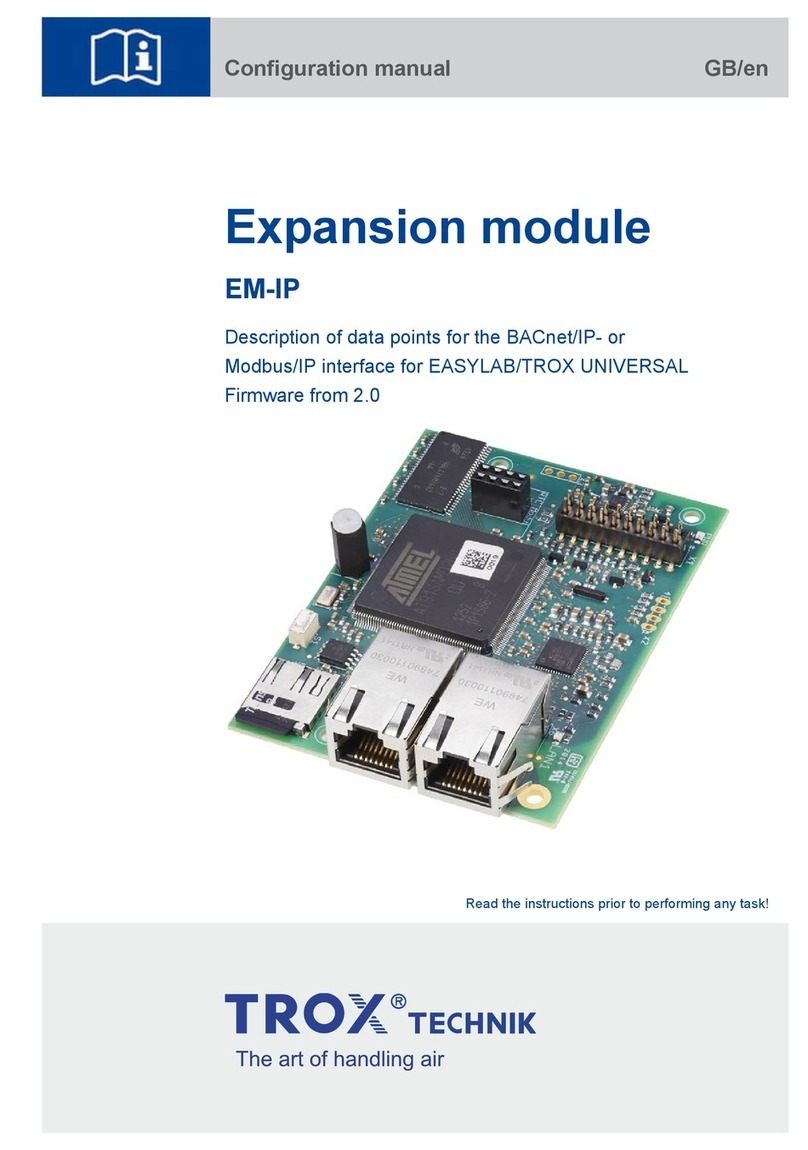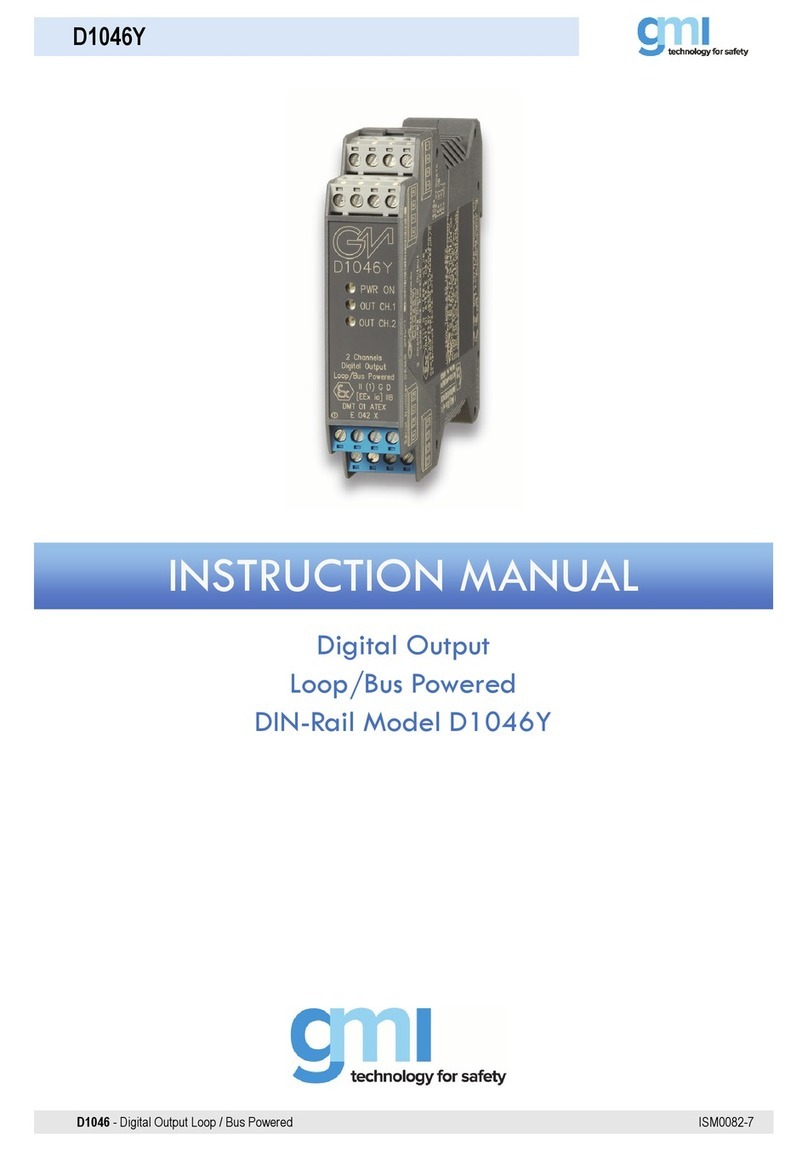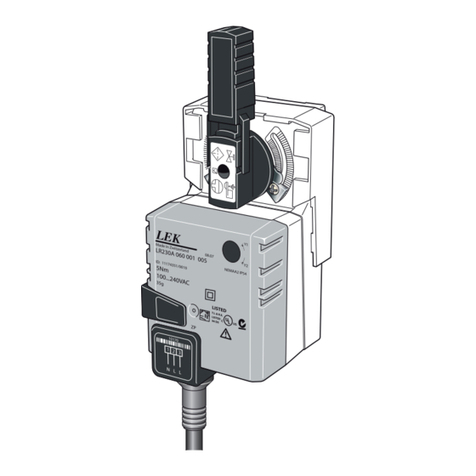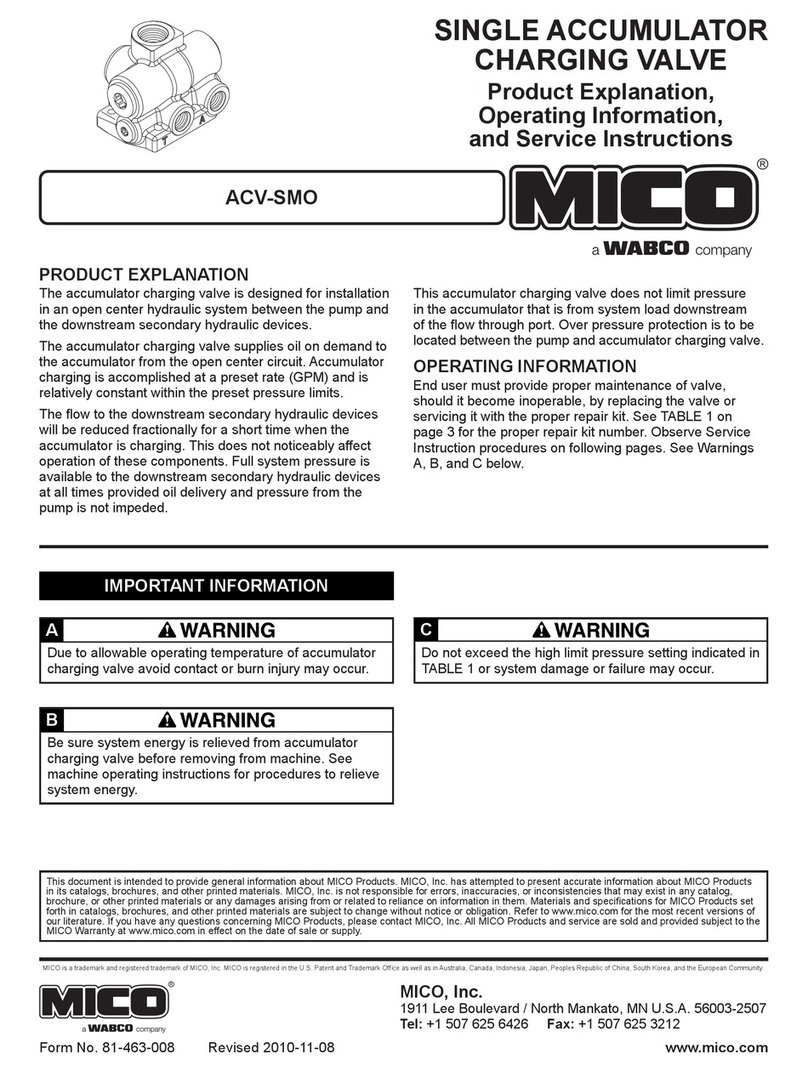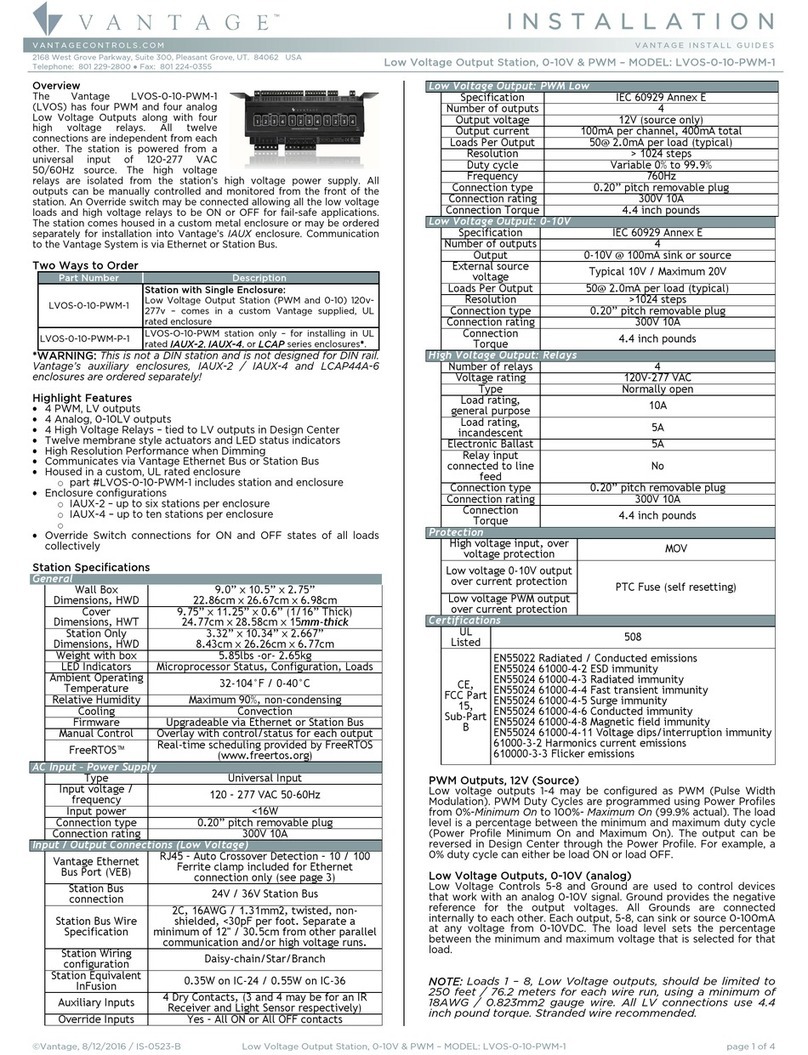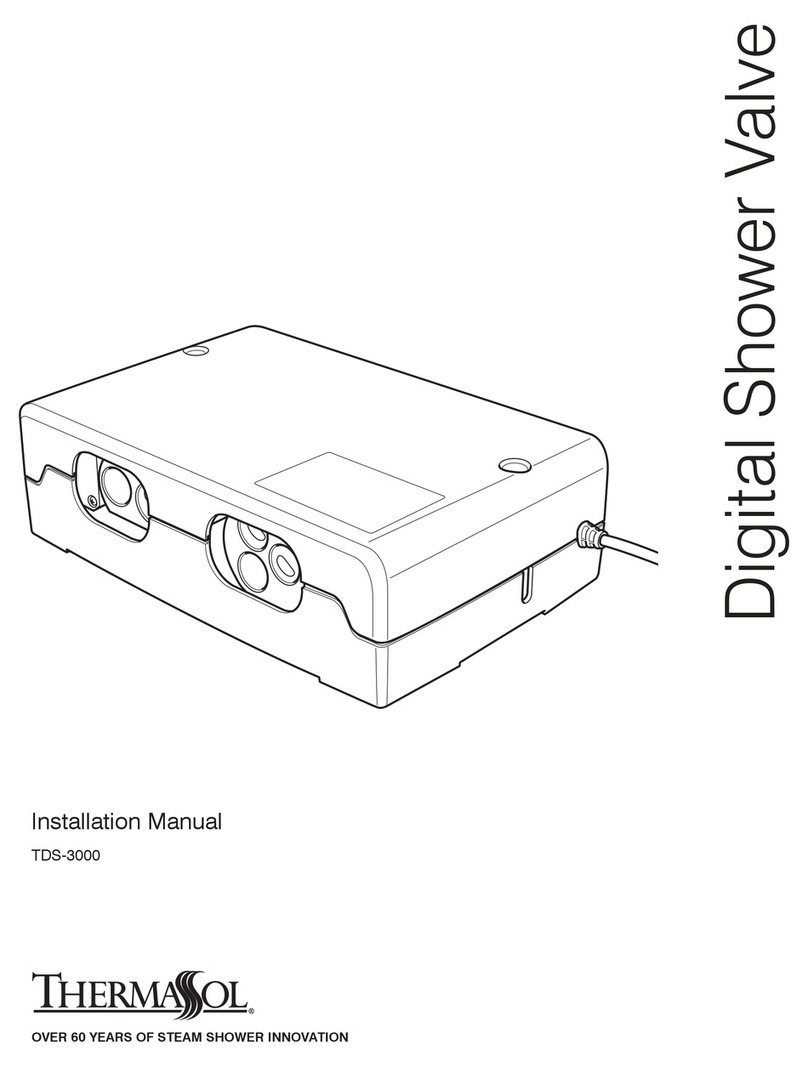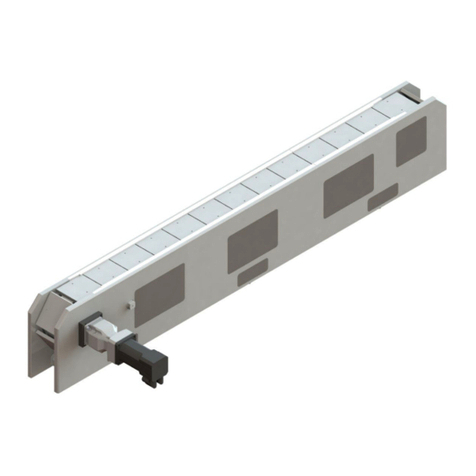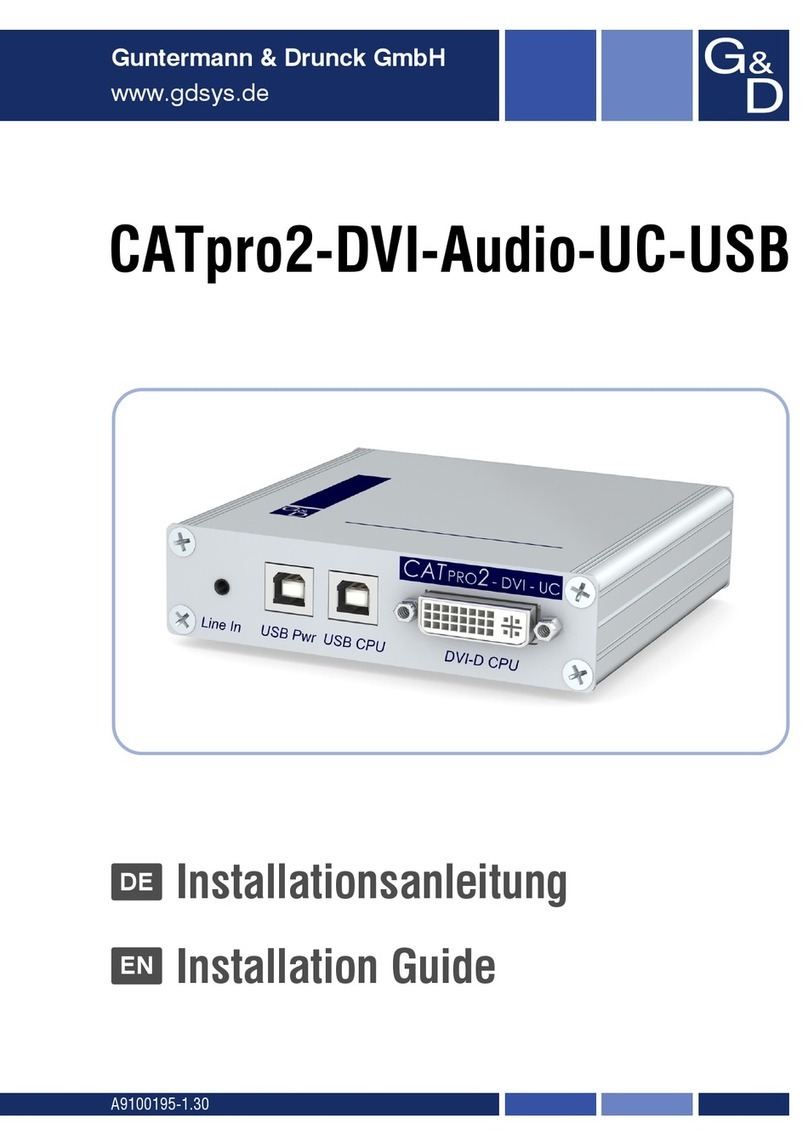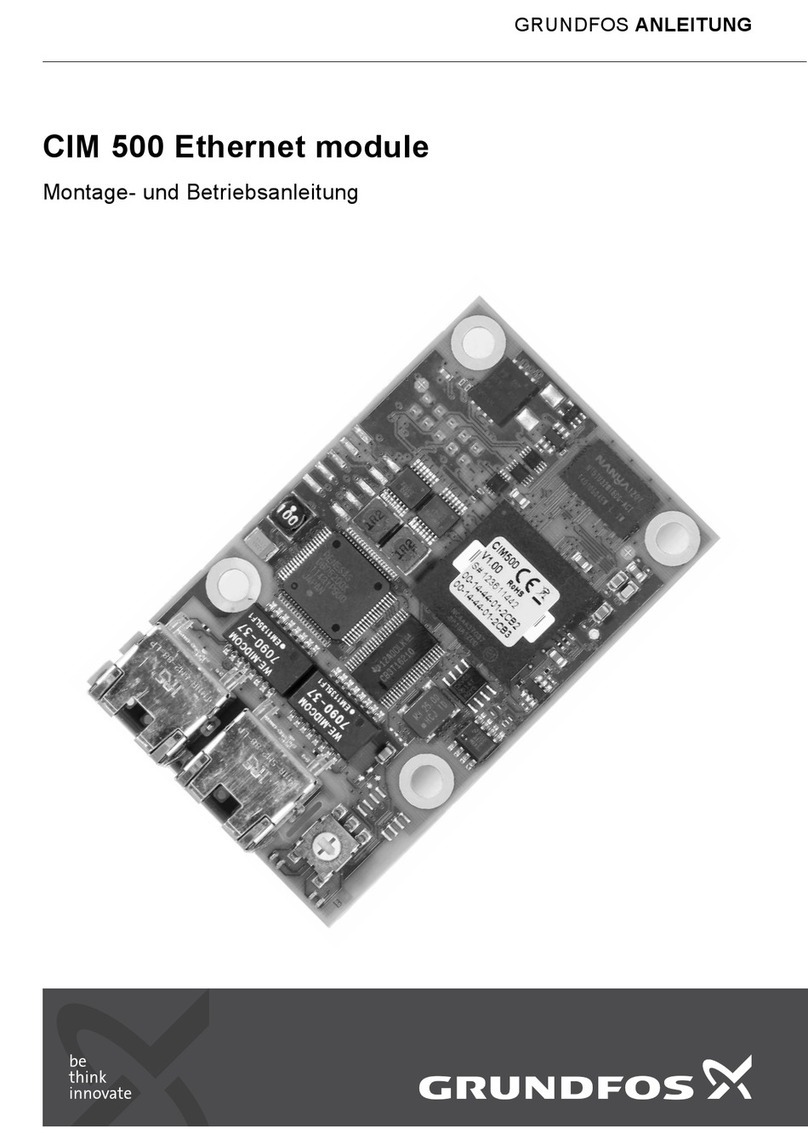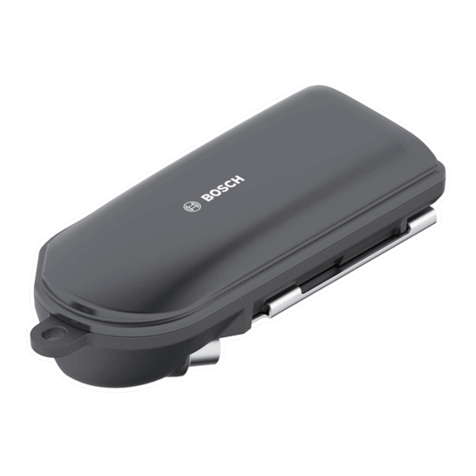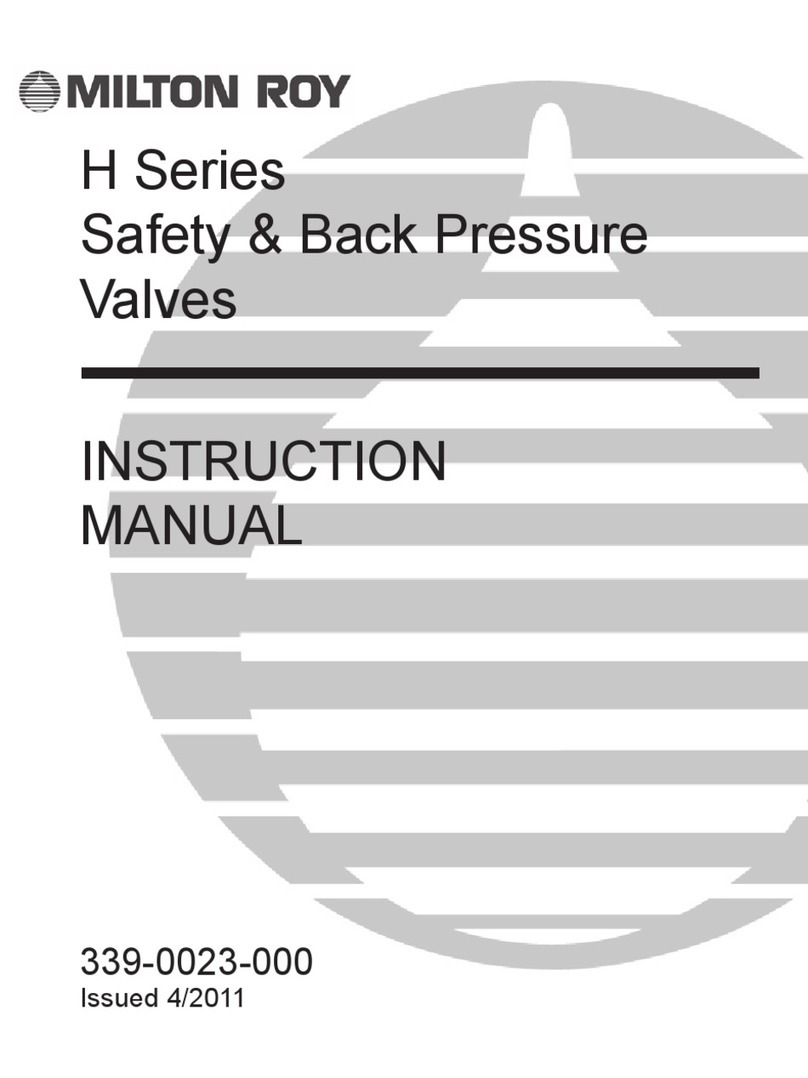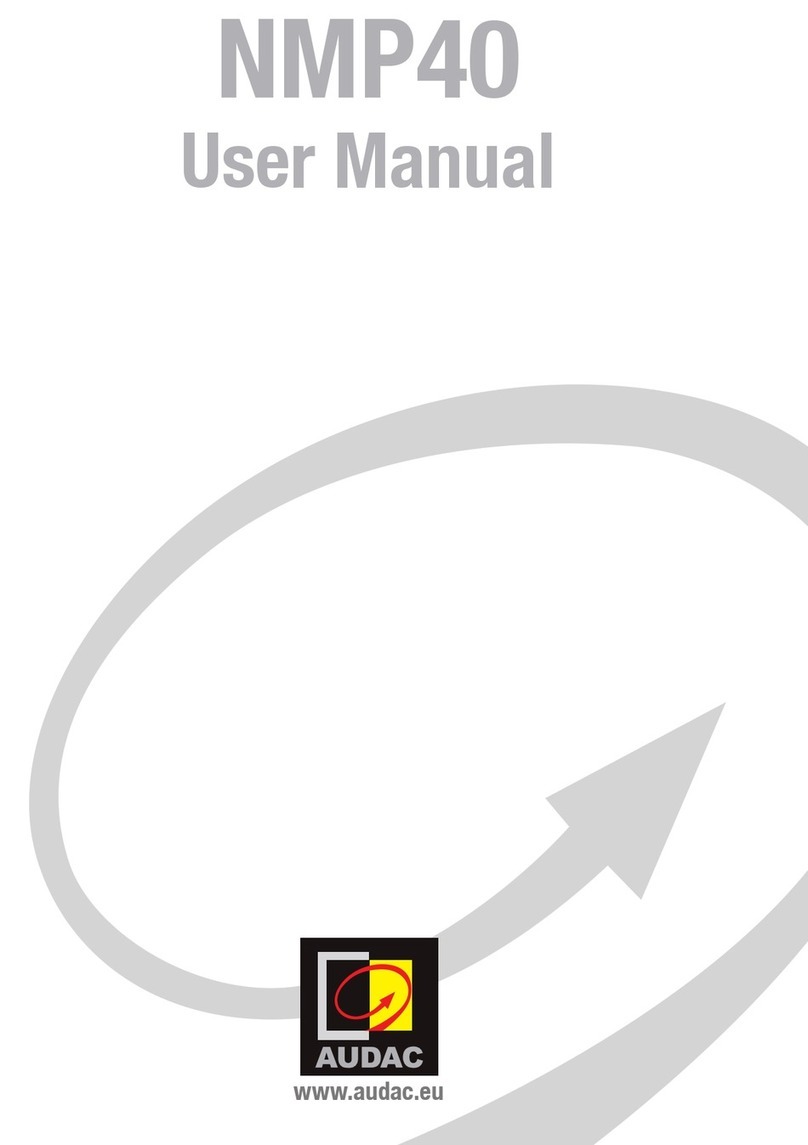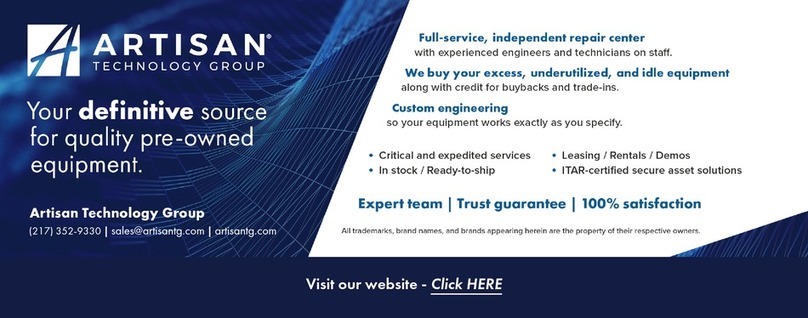
Installation manual for automatic extract air valve
4
Standards and guidelines
For all work on the automatic extract air valve, the following
provisions and guidelines among others must be observed
- Product Safety Law (PrSG)
- EKAS provisions
The local regulations for health and safety at work and general
safety regulations also apply.
Repair and replacement parts
To maintain the function, use only original TROX HESCO
Schweiz AG replacement parts.
Environmental protection / disposal
To protect the environment keep the following in mind:
- Dispose of packaging for the automatic extract air valve in
an environmentally sound manner.
- The automatic extract air valve must be disposed of pro-
perly- by an authorised agent after its final
decommissioning.
- Dispose of electronic components according -
to the national electronic waste regulations.
Qualied sta
Skilled qualied electrician
Skilled qualified electricians are individuals who have sufficient
professional or technical training, knowledge and actual ex-
perience to enable them to work on electrical systems, under-
stand any potential hazards related to the work under conside-
ration, and recognise and avoid any risks involved.
Specialist personnel
Specialist personnel are individuals who have sufficient profes-
sional or technical training, knowledge and actual experience to
enable them to carry out their assigned duties, understand any
potential hazards related to the work under consideration, and
recognise and avoid any risks involved.
Limitation of liability
The information in this manual has been compiled with refe-
rence to the applicable standards and guidelines, the state of
the art, and our expertise and experience of many years.
The manufacturer does not accept any liability for damages
resulting from:
- Non-compliance of these instructions
- Improper use
- Operation or handling by untrained individuals
- Unauthorised modifications
The actual supply package may differ from the information in
this manual for special versions, additional order options or as
a result of recent technical changes.
Personal protective equipment
Personal protective equipment must be worn for any work in
order to reduce health or safety hazards to the minimum.
The appropriate protective equipment for a job must be worn
for as long as the job takes.
Industrial safety helmet
Industrial protective helmets protect the head from falling ob-
jects, suspended loads and knocks against
stationary objects.
Protective gloves
Protective gloves protect hands from friction, abrasions, punc-
tures, deep cuts, and direct contact with hot surfaces.
Safety shoes
Safety shoes protect the feet against crushing, falling parts,
and from slipping on slippery ground.
Correct use
The automatic extract air valve is used for central, energy-
saving extract air systems.










